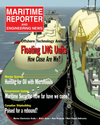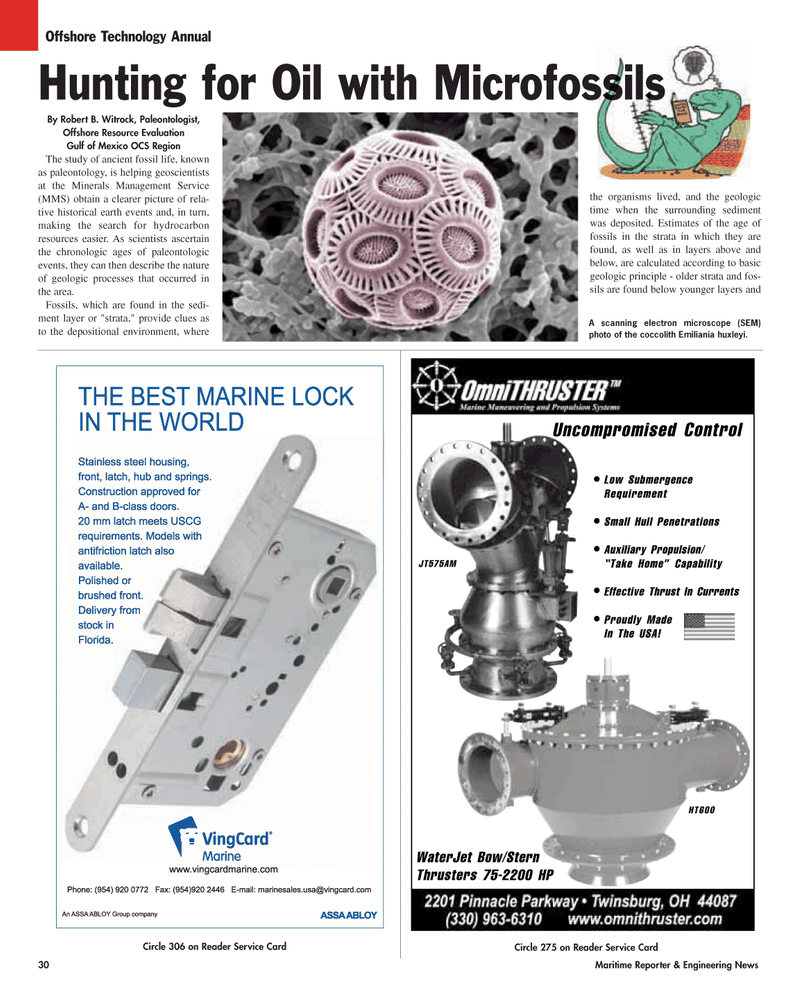
Page 30: of Maritime Reporter Magazine (April 2005)
The Offshore Industry Anual
Read this page in Pdf, Flash or Html5 edition of April 2005 Maritime Reporter Magazine
30 Maritime Reporter & Engineering News
By Robert B. Witrock, Paleontologist,
Offshore Resource Evaluation
Gulf of Mexico OCS Region
The study of ancient fossil life, known as paleontology, is helping geoscientists at the Minerals Management Service (MMS) obtain a clearer picture of rela- tive historical earth events and, in turn, making the search for hydrocarbon resources easier. As scientists ascertain the chronologic ages of paleontologic events, they can then describe the nature of geologic processes that occurred in the area.
Fossils, which are found in the sedi- ment layer or "strata," provide clues as to the depositional environment, where the organisms lived, and the geologic time when the surrounding sediment was deposited. Estimates of the age of fossils in the strata in which they are found, as well as in layers above and below, are calculated according to basic geologic principle - older strata and fos- sils are found below younger layers and
Uncompromised Control
WaterJet Bow/Stern
Thrusters 75-2200 HP
JT575AM
HT600
Low Submergence
Requirement
Small Hull Penetrations
Auxiliary Propulsion/ “Take Home” Capability
Effective Thrust In Currents
Proudly Made
In The USA!
Circle 275 on Reader Service CardCircle 306 on Reader Service Card
Offshore Technology Annual
A scanning electron microscope (SEM) photo of the coccolith Emiliania huxleyi.
Hunting for Oil with Microfossils
MR APRIL 2005 #4 (25-32).qxd 4/1/2005 4:00 PM Page 30

 29
29

 31
31
